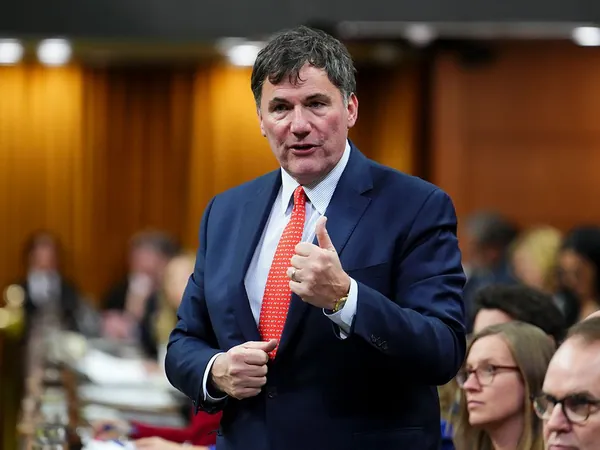
Liberals Add More Firearms to Prohibited List Amid Controversy Over Gun Control Measures
2024-12-06
Author: Liam
In a bold move aimed at tightening gun control in Canada, the federal government has announced the addition of 324 unique makes and models of what they classify as "assault-style" firearms to the existing list of banned weapons. This decision, made public by Public Safety Minister Dominic LeBlanc, is part of the ongoing legislative efforts to address gun violence in light of tragic historical events, including the infamous École Polytechnique shooting in Montreal that claimed the lives of 14 women in December 1989.
The new regulations, taking effect immediately, bring the total number of banned firearms to approximately 14,500, as indicated by Public Safety Canada. LeBlanc emphasized that this was a necessary step to honor the victims of mass shootings and enhance public safety across the nation. His statements reflect the government's commitment to implementing stricter gun control laws as a response to rising concerns over gun-related violence. Notably, data reveals that violent crime in Canada has surged over 50% in recent years, with gun crimes seeing an extraordinary 116% increase.
The federal government previously announced a ban on around 1,500 types of firearms in May 2020, pledging compensation for gun owners through a still-to-be-implemented buyback program estimated to cost over $750 million. Currently, an amnesty order protects gun owners and businesses with prohibited inventory until October 2025, coinciding with the anticipated timeline for the next federal election.
In a surprising turn, LeBlanc mentioned the possibility of sending some of these banned firearms to Ukraine, where the government has faced mounting pressure from the ongoing conflict with Russia. The Canadian government has committed to identify and potentially donate legal firearms to support Ukraine in its fight for democracy. Defence Minister Bill Blair confirmed communications with Ukrainian officials, who indicated that certain banned firearms could be viable for their use.
The announcement has drawn criticism from various political figures, particularly from the Conservative Party. Public Safety Critic Raquel Dancho labeled the new prohibitions as mere symbolic gestures that fail to address the underlying factors contributing to violent crime. She criticized the Trudeau government's handling of gun policies, claiming it has only aggravated crime rates and increased the flow of illegal firearms across Canada's borders.
Alberta Justice Minister Mickey Amery echoed similar concerns, challenging the Liberal government's focus on lawful gun ownership while neglecting to strengthen border controls to combat illegal firearm trafficking. The Alberta government has pledged not to enforce the mandatory buyback program, with other provinces like Manitoba and Saskatchewan expressing their opposition as well.
As the conversation around gun control continues, LeBlanc assured that more regulations are on the horizon. The RCMP is currently evaluating what to do about the SKS, a popular hunting rifle, amid the complicated discussions surrounding its status. Further details regarding these upcoming measures are expected by February 2025 when the government plans to update its list of prohibited firearms.
This announcement signals a contentious path ahead in Canada's evolving dialogue on firearms regulation, balancing public safety, the rights of lawful gun owners, and the pressing need for effective crime prevention strategies. As Canadians await further details, the question remains: will these measures ultimately lead to a safer society, or merely add to the already complex landscape of gun ownership in Canada?



 Brasil (PT)
Brasil (PT)
 Canada (EN)
Canada (EN)
 Chile (ES)
Chile (ES)
 Česko (CS)
Česko (CS)
 대한민국 (KO)
대한민국 (KO)
 España (ES)
España (ES)
 France (FR)
France (FR)
 Hong Kong (EN)
Hong Kong (EN)
 Italia (IT)
Italia (IT)
 日本 (JA)
日本 (JA)
 Magyarország (HU)
Magyarország (HU)
 Norge (NO)
Norge (NO)
 Polska (PL)
Polska (PL)
 Schweiz (DE)
Schweiz (DE)
 Singapore (EN)
Singapore (EN)
 Sverige (SV)
Sverige (SV)
 Suomi (FI)
Suomi (FI)
 Türkiye (TR)
Türkiye (TR)
 الإمارات العربية المتحدة (AR)
الإمارات العربية المتحدة (AR)